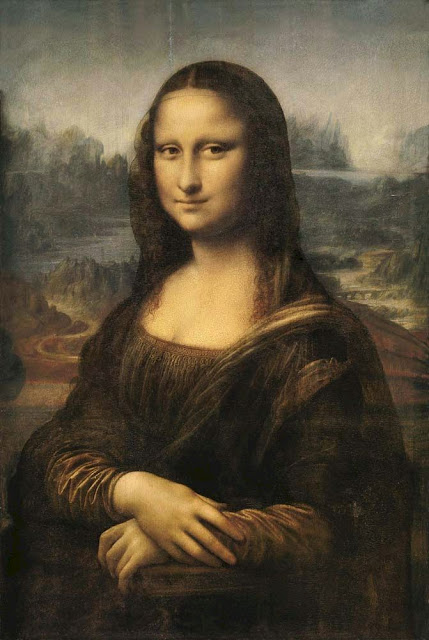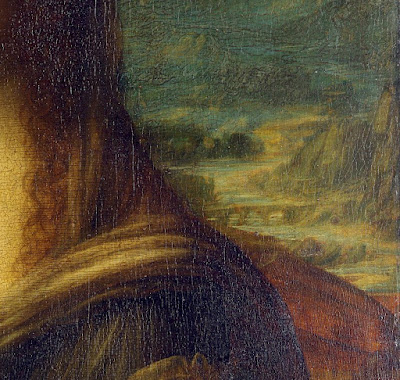The question of who was Mona Lisa has occupied scholars for at least 150 years, more or less since Leonardo da Vinci's painting, known in English as "Mona Lisa", became the most famous painting on the planet - before that time it was well-known but not as highly esteemed as it became. The subject of the painting is widely believed to be Lisa del Giocondo who was a member of the Gherardini family of Florence and Tuscany, and the wife of the wealthy Florentine silk merchant, Francesco del Giocondo. This was Vasari's belief and there is no doubt that Leonardo worked on a portrait of Lisa del Giocondo. This was confirmed in 2005, when a scholar at Heidelberg University discovered a marginal note in a 1477 edition of a work by Cicero. The note was written by Leonardo's contemporary Agostino Vespucci, is dated October 1503 and states that Leonardo was at that time working on a painting of Lisa del Giocondo. There have even been claims that the portrait was painted at Villa Vignamaggio near Greve in Chianti, and that some of the geological formations in the background are the famous Tuscan balze, a type of eroded badlands formation.
However, was that painting the one we know today as "Mona Lisa"? According to Martin Kemp, one of the foremost Leonardo scholars, there is not the slightest scrap of evidence that it was. In his still valuable 1981 study, "Leonardo da Vinci. The marvellous works of Nature and Man", Kemp punctiliously refers to the Louvre painting as "Portrait of a Lady on a Balcony" and is convinced that it was started shortly before 1506 during Leonardo's Florentine period. Based on the 1517 report of his meeting with Leonardo by Antonio de' Beatis, Kemp also rules out the possibility of identifying her as one of the great ladies of the Renaissance. de' Beatis stated that it was a "portrait of a certain Florentine lady, made from nature at the instigation of the late Magnificent Giuliano de' Medici". However, Kemp thinks that the portrait was worked on from time to time later, especially the elaboration of the background.
Needless to say, several other names have been proposed for the subject this portrait, including Isabella d'Este, Isabella of Aragon, Cecilia Gallerani, Costanza d'Avalos, Duchess of Francavilla, Pacifica Brandano or Brandino, Isabela Gualanda, Caterina Sforza and, most recently, Bianca Giovanna Sforza.
Carla Gori has proposed that the Mona Lisa is in fact a portrait of Bianca Giovanna Sforza, wife of the jouster Galeazzo Sanseverino, daughter of Ludovico il Moro, Duke of Milan and Lord of Bobbio near Piacenza. The basis of her hypothesis is as follows. She considers that the mural drawings of the Malaspina dal Verme castle dedicated to Sanseverino, patron and friend of Leonardo, were, at the very least, supervised on site by Leonardo.
In the background of the Mona Lisa, a bridge is depicted which she identified, in 2010, as the Ponte Gobbo di Bobbio, specifically as viewed from Malaspina dal Verme castle. In addition to the Ponte Gobbo, the Trebbia river and its large bend coincide with the stream depicted to the right of the Mona Lisa. The same goes for the mountains in the background, similar to the topography of the Val Tidone, the Pietra Parcellara and the badlands area. Most recently, circumstantial evidence suggests that Leonardo did indeed spend time at Pierfrancesco di Gropparello, near Bobbio. A group of geologists published a description of ichnofossils quite specific to that zone which seem to be the same as those illustrated by Leonardo in the Codex Leicester.
It's unlikely that Bianca Giovanna Sforza will displace Lisa del Giocondo as "Mona Lisa" anytime soon, but as research continues, who can tell?
|
Author: Anna Maria Baldini





